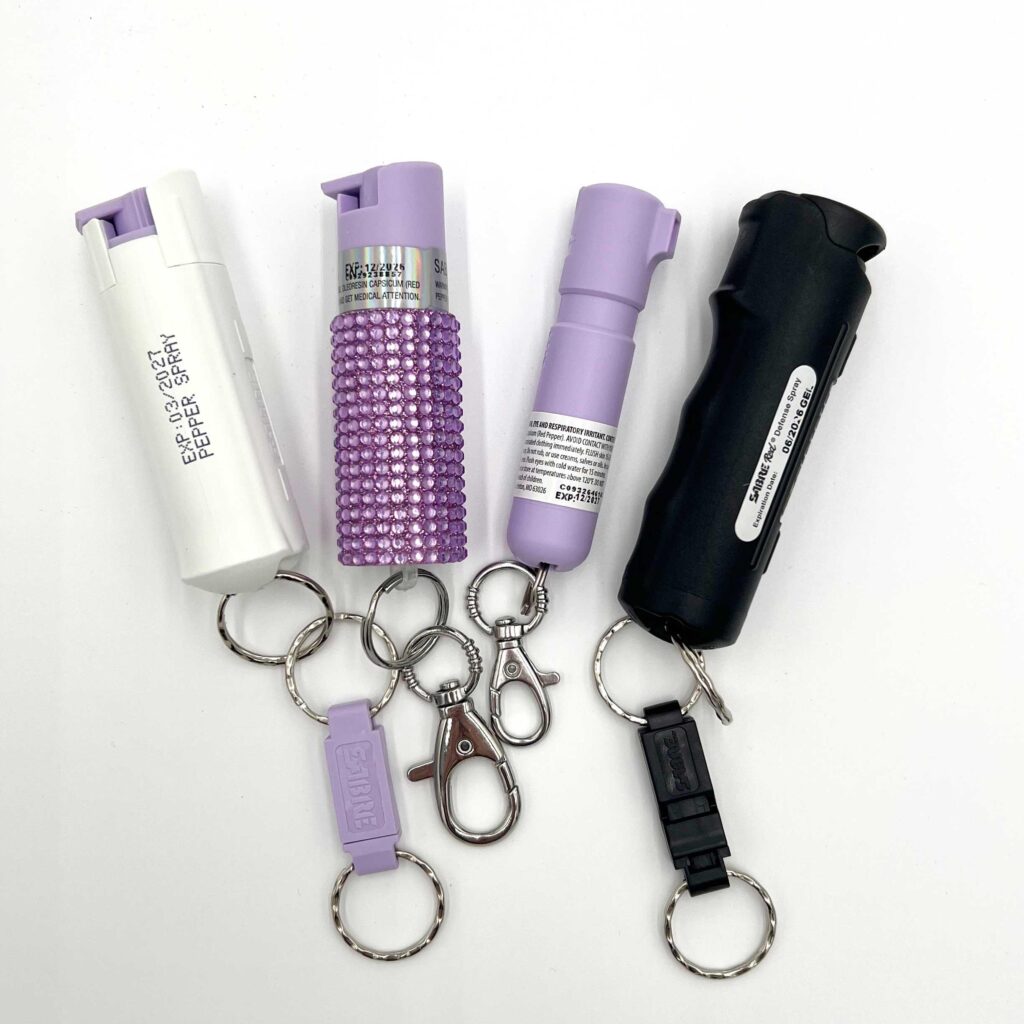Table of Contents
- Proper Storage Conditions to Maintain Pepper Spray Potency
- Understanding Expiration Dates and When to Replace Your Pepper Spray
- Regular Inspection and Maintenance for Optimal Performance
- Avoiding Common Mistakes That Can Shorten Shelf Life
- In Conclusion
Proper Storage Conditions to Maintain Pepper Spray Potency
Keeping your pepper spray effective hinges largely on where and how you store it. Extreme temperatures can significantly degrade its potency; exposing the canister to excessive heat above 120°F (49°C) or freezing conditions can cause the internal propellant and active ingredients to break down faster. Store your pepper spray at room temperature, away from direct sunlight or sources of heat such as car dashboards or near heating vents. A cool, dry, and dark environment helps maintain the chemical stability and ensures optimal performance when you need it most.
Additionally, proper placement is key to preventing accidental damage or leaks. Avoid keeping pepper spray in pockets or bags tightly packed with heavy items, as excessive pressure or impact can compromise the canister’s integrity. Instead, consider dedicated holsters or securing it in accessible yet safe locations, like a belt clip or a secure compartment in your bag. Some helpful storage practices include:
- Regularly checking the expiration date and replacing expired units promptly
- Keeping the nozzle clean and unobstructed to maintain spray accuracy
- Ensuring the cap or safety mechanism is firmly closed to prevent accidental discharge
Understanding Expiration Dates and When to Replace Your Pepper Spray
Every pepper spray product comes with an expiration date, usually printed on the bottom or side of the canister. This date is essential because the chemical compounds in the spray can degrade over time, reducing effectiveness. While it may seem tempting to hold onto your pepper spray indefinitely, using a product past its expiry can significantly compromise your safety. Factors such as exposure to heat, sunlight, and humidity accelerate this degradation, so check the date regularly and consider your storage conditions to ensure you’re always prepared.
When it’s time to replace your pepper spray, look for a few telltale signs beyond the printed expiration. These include:
- Change in Pressure: A canister that doesn’t spray properly or has diminished spray force.
- Unusual Odor: A stale or off smell could indicate chemical breakdown.
- Visible Damage: Dents, corrosion, or leaks that compromise the container.
Regularly inspecting your pepper spray and adhering to replacement guidelines can make the difference between effective self-defense and failure when you need it most.
Regular Inspection and Maintenance for Optimal Performance
Maintaining your pepper spray in prime working condition requires more than just proper storage; it demands consistent attention to ensure reliability when you need it most. Regularly check the canister for any dents, rust, or damage to the nozzle, as these can affect the spray pattern or cause potential leaks. Additionally, gently shake the canister monthly to redistribute the active ingredients, preventing them from settling or separating. Keeping the safety mechanism clean and operational is equally important-wipe it with a dry cloth to remove debris that might impede triggering.
Incorporate these maintenance practices into your routine to keep your pepper spray functioning optimally:
- Test spray periodically into the air (in a safe, open environment) to confirm spray effectiveness and check the reach and pattern.
- Inspect the expiration date; replace your device promptly to avoid reduced potency after expiry.
- Store your pepper spray at room temperature away from direct sunlight or moisture to prevent pressure changes inside the canister.
- Ensure the cap remains securely fastened to avoid accidental discharge or contamination.
Avoiding Common Mistakes That Can Shorten Shelf Life
One of the biggest errors users make is storing pepper spray in fluctuating temperatures, such as inside a car during hot summers or freezing winters. Both extreme heat and cold can degrade the chemical potency, causing the spray to become less effective or even expire prematurely. Avoid placing your pepper spray near windows, heaters, or air conditioners that might expose it to rapid temperature changes. Instead, opt for a cool, dry spot inside your home, ensuring consistent conditions that protect the integrity of the canister.
Another common oversight is neglecting regular inspections and failing to replace expired units. While it might seem convenient to hold onto your pepper spray indefinitely, the propellant and active ingredients have a limited lifespan. Check your spray for dents, leaks, or corrosion, as these physical damages can compromise safety and effectiveness. To maintain reliability, adhere to the manufacturer’s recommended replacement dates and consider labeling your sprays with purchase dates for easy tracking.
- Never store near direct sunlight or moisture.
- Avoid shaking the canister excessively.
- Keep out of reach of children but easily accessible in emergencies.
In Conclusion
Incorporating these essential tips into your pepper spray maintenance routine can significantly extend its shelf life, ensuring it remains effective when you need it most. Regularly checking expiration dates, storing your spray in optimal conditions, and handling it with care are simple yet crucial steps to maximize its reliability. Remember, your personal safety is paramount, and keeping your pepper spray in top condition is a proactive way to stay prepared. Stay safe and stay smart!Check Our Other Blogs
- StunGun – Your Trusted Source for Stun Guns, Laws, and Self-Defense Tips
- PepperSprayLaws – Your Trusted Resource for Pepper Spray Information
- StunGunLaws – Your Trusted Guide to Stun Gun Legality and Safety




